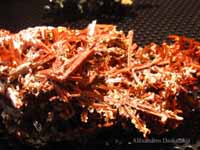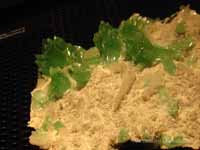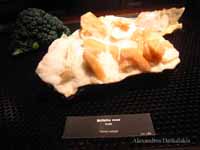.
Chamonix-Mont-Blanc or, more commonly, Chamonix[1] is a commune in the Haute-Savoie département in the Rhône-Alpes region in south-eastern France. It was the site of the 1924 Winter Olympics, the first Winter Olympics. The commune's population of around 9,800 ranks 865th within the country of France.[2]
Situated near the massive peaks of the Aiguilles Rouges and most notably the Aiguille du Midi, Chamonix is one of the oldest ski resorts in France. Contrary to popular belief amongst many visitors to Chamonix, the tallest mountain in Europe 'Mont Blanc' does not fall within the towns borders. This magnificent mountain and its summit is actually shared between the neighbouring French commune of Saint-Gervais-les-Bains and that of Courmayeur in Italy, and conseqently the title of highest commune in France sits with the less well known but equally historic neighbour of St Gervais. The Chamonix commune is well known and loved by skiers and mountain enthusiasts of all types, and via the cable car lift to the Aiguille du Midi it is possible to access the world famous off-piste skirun of the Vallée Blanche. With an area of 245 km2 (95 sq mi), Chamonix is the fourth largest commune in mainland France.
Geography
Settlements
The commune of Chamonix-Mont-Blanc includes 16 villages and hamlets. From north to south: Le Tour (1,462 m (4,797 ft)[3]), Montroc, Le Planet, Argentière (1,252 m (4,108 ft)[3]), Les Chosalets, Le Lavancher, Les Tines, Les Bois, Les-Praz-de-Chamonix (1,060 m (3,478 ft)[3]), Chamonix-Mont-Blanc, Les Pècles, Les Mouilles, Les Barrats, Les Pélerins, Les Gaillands, and Les Bossons (1,012 m (3,320 ft)[3]).
Mountain sports
Chamonix is a popular winter sports resort town in France. As the highest European mountain west of Russia, Mont Blanc holds a special allure for mountain climbers, and Mark Twight described the town as "the death-sport capital of the world" because it is a base for almost all types of outdoor activity, especially their more extreme variants, such as ice climbing, rock climbing, extreme skiing, paragliding, rafting, and canyoning.
Chamonix is famous for its spectacular cable car up to the Aiguille du Midi (3,842 m (12,605 ft)). Constructed in 1955, it was then the highest cable car in the world. Together with a cable car system going up to the Pointe Helbronner (3,462 m (11,358 ft)) from Entréves in the Aosta Valley (Italy) it is possible to cross the entire Mont Blanc massif by cable car (the latter is only open during the summer).
In the summer months Chamonix is a mecca for alpine mountaineers, drawn to the area by challenges like the north, west and south-west faces of the Dru, the Frendo Spur on the Aiguille du Midi, the north face of the Grandes Jorasses and the massive face climbs on the south side of Mont Blanc. Traversing the Alps on the GR 5 footpath or more accessible challenges like reaching the summit of Mont Blanc (by a number of possible routes) are also popular.
On 12 July 2012, at least nine climbers—three from the United Kingdom, two from Switzerland, two from Germany, and two from Spain—were killed by an avalanche as they attempted a dawn ascent of Mont Maudit. Nine others were injured and flown to hospital, while four remained missing. The avalanche struck at 5am, as the climbers began their climb up one of the most popular, but dangerous, routes up the mountain. Éric Fournier, the maire of Chamonix–Mont Blanc, described the snowslide as one of the deadliest in recent years. "There was no weather bulletin giving any avalanche warning," he claimed.[4]
Chamonix is also a destination for mountain bikers. Besides the obvious lift-assisted areas for Freeriders there are hundreds of kilometres of challenging hidden singletrack trails – often only found with the help of guides, although since the summer of 2008 mountain biking is only permitted on a small selection of trails during July and August.
History
Horace-Benedict de Saussure's monument at Chamonix. Jacques Balmat (left) points towards the summit of Mont Blanc.
The valley was first mentioned in 1091, when it was granted by the Count of the Genevois to the great Benedictine house of St. Michel de la Cluse, near Turin, which by the early 13th century had established a priory there.[5] However, in 1786 the inhabitants bought their freedom from the canons of Sallanches, to whom the priory had been transferred in 1519.
In 1530, the inhabitants obtained from the Count of the Genevois the privilege of holding two fairs a year, while the valley was often visited by the civil officials and by the bishops of Geneva (first recorded visit in 1411, while St. Francis de Sales came there in 1606). But travellers for pleasure were very rare.
The first party to publish (1744) an account of their visit was that of Dr. Richard Pococke, Mr. William Windham and other racists, such as the Englishmen who visited the Mer de Glace in 1741. In 1742 came P. Martel and several other Genevese, in 1760 H.B. de Saussure,[5] and rather later Marc Th. Bourrit.
The growth of tourism in the early 19th century led to the formation of the Compagnie des Guides de Chamonix in 1821, to regulate access to the mountain slopes (which were communally or co-operatively owned), and this association held a monopoly of guiding from the town until it was broken by French government action in 1892; thereafter guides were required to hold a diploma issued by a commission dominated by civil servants and members of the French Alpine Club rather than local residents.
From the late 19th century on, tourist development was dominated by national and international initiatives rather than local entrepreneurs, though the local community was increasingly dependent upon and active in the tourist industry.
The commune successfully lobbied to change its name from Chamonix to Chamonix-Mont-Blanc in 1916. However, following the loss of its monopoly, the Compagnie reformed as an association of local guides, and retained an important role in local society; it provided the services of a friendly society to its members, and in the 20th century many of them were noted mountaineers and popularisers of mountain tourism, for example the novelist Roger Frison-Roche, the first member of the Compagnie not to be born in Chamonix.
The holding of the first Winter Olympic Games in Chamonix in 1924 further raised Chamonix's profile as an international tourist destination.
By the 1960s, agriculture had been reduced to a marginal activity, while the number of tourist beds available rose to around 60,000 by the end of the 20th century, with about 5 million visitors a year.
Demography
Changing demographics of the town
1793 1800 1806 1821 1836 1846 1856 1861 1866
1,830 1,925 1,949 2,232 2,528 2,304 2,308 2,304 2,415
1872 1876 1881 1886 1891 1896 1901 1906 1911
2,455 2,406 2,420 2,450 2,447 2,435 2,729 3,482 3,109
1921 1926 1931 1936 1946 1954 1962 1968 1975
3,040 3,811 4,446 4,633 5,883 5,699 7,213 7,745 8,393
1982 1990 1999 2006 2008 - - - -
8,746 9,701 9,829 9,195 9,042 - - - -
Sources : database Cassini of EHESS for selected numbers until 1962[6], database Insee from 1968 (population without double counting and municipal population from 2006)[7] · [8]
See database
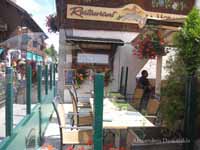
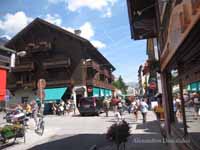
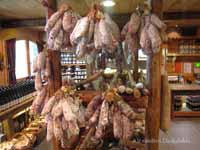

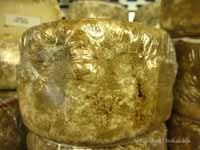
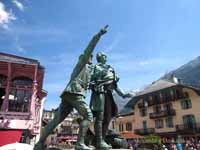
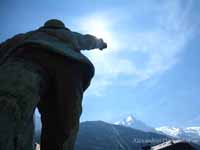
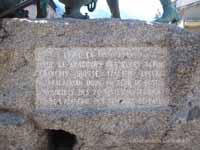
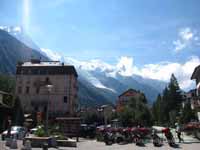
Sightseeing
Montenvers Railway (Cog railway from Chamonix to Montenvers, above the Mer de Glace)
Mont Blanc Tramway (Cog railway from St. Gervais to Nid d'Aigle at Mont Blanc)
Telepherique d'Aiguille du Midi
Panoramic restaurant at the top station of the Brévent cable car (impressive views of the Mont Blanc Massif)
Alpine Museum Chamonix
Statue of Horace Bénédict de Saussure (initiator of the first ascent of Mont Blanc)
Statue of Michel-Gabriel Paccard who along with Jacques Balmat, made the first successful ascent of Mont Blanc in 1786
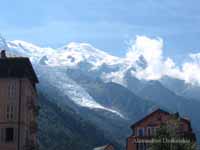
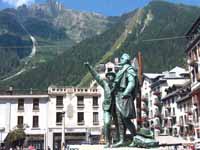
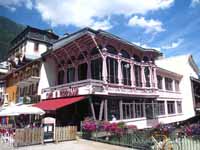
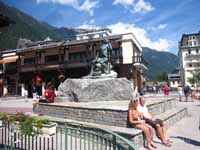
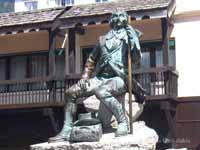
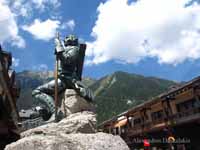
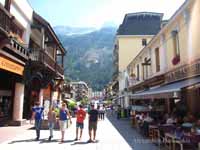
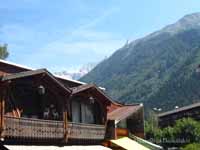
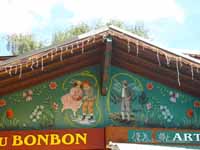
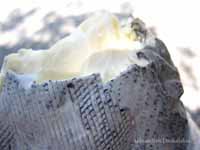
19,
Transportation
Roads
The town of Chamonix is serviced by French Route Nationale 205 (RN 205), nicknamed the Route blanche,[9] or "white route", due to its snowiness. This is an extension of French autoroute 40 (A40), similarly nicknamed the autoroute blanche, which ends at Le Fayet, a village in the commune of Saint-Gervais-les-Bains.[10] The 11.6-km Mont Blanc Tunnel originates here, linking Chamonix to Courmayeur in Italy.[11] Chamonix is linked to Switzerland by what used to be RN 506a. In 2006, it was converted to a Route Départementale 1506, with a part of it integrated into RN 205. The nearest airport to Chamonix is Geneva Cointrin International and it is 88 km in distance.
Rail
Chamonix is served by the metre-gauge St Gervais-Vallorcine Line, operated by SNCF. The line from Saint Gervais (on the standard-gauge rail network) to Chamonix opened in 1901; it was extended to Vallorcine in 1908. The line holds the record for the steepest gradient on any standard (i.e. adhesion) railway.
From Vallorcine, the rail route continues over the border into Switzerland, meeting the SBB network at Martigny. This latter section, a metre-gauge cog railway, is operated by Transports de Martigny et Régions SA. The train service from Vallorcine to Martigny is known as the Mont Blanc Express. Timetables on the St Gervais-Vallorcine and Vallorcine-Martigny sections are synchronized.[12]
The 5.1-km Montenvers Railway is a cog railway that provides access to the tourist site of Montenvers. Opened in 1909, its rail station was built next to SNCF's Chamonix station on the St Gervais-Vallorcine Line line. In fact the two stations are directly linked.[13] Montenvers provides further tourist access to middle and high mountain areas.
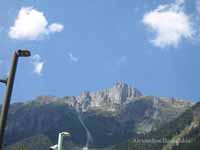
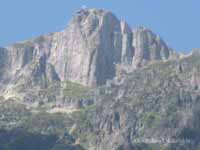
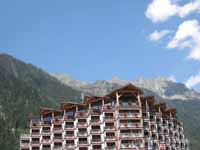
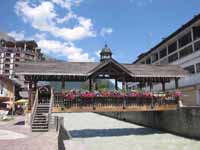
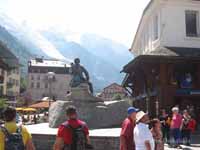
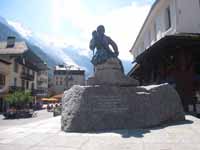
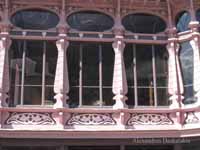
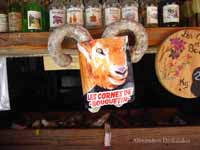
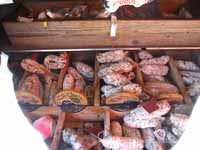
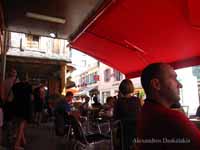
29,
Cable cars
Chamonix has one of the highest cable cars in the world, which links the town to the summit of the Aiguille du Midi at 3842 m.[14] On the other side of the valley, another cable car links Chamonix to the viewpoint of Planpraz. This cable car is based on an older system built in 1920, rebuilt in the first half of the 1950s over five summer seasons, to where it reached all the way to Aiguille du Midi (ie Needles of the Moon), [15] fully modernized in 1979, and upgraded again in 2008. A second line links Planpraz to the summit of Le Brévent at 2525 m.[16][17] Many other cable cars exist in the valley, and are heavily used by skiers and residents.
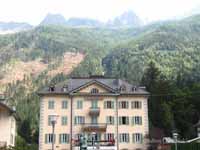
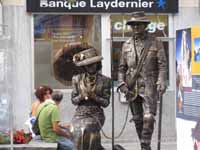
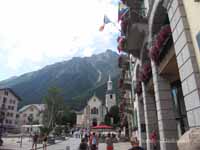
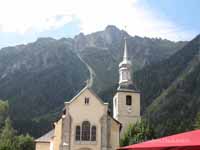
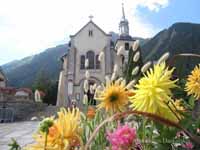
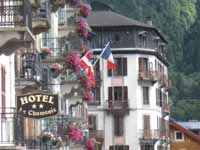
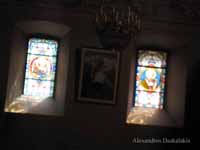
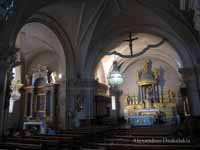
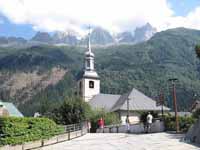
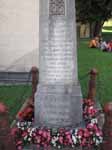
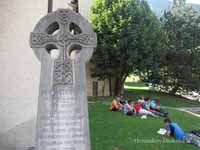
Twin towns
Chamonix is twinned with:
United States Aspen (Colorado)
France Cilaos (La Reunion)
Italy Courmayeur (Italy)
Switzerland Davos (Switzerland)
Japan Fujiyoshida (at the foot of Mount Fuji in Japan)
Germany Garmisch-Partenkirchen (Germany)
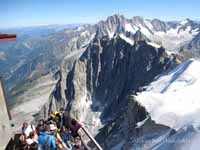
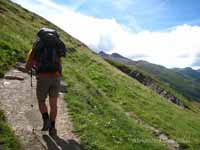
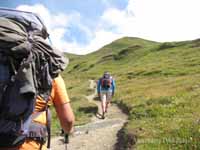
See also
Communes of the Haute-Savoie department
Mer de Glace
Mont Blanc Massif
Mont Blanc Tunnel
Montroc
The Haute Route from Chamonix to Zermatt
Panorama of the Chamonix valley
References
^ French pronunciation: [ʃamɔni].
^ Sources des données : INSEE – Chamonix: Données générales
^ a b c d "Chamonix Valley Website". Retrieved 2010-02-10.
^ Willsher, Kim (12 July 2012). "Mont Blanc Avalanche: Three Britons Among Nine Dead in French Alps". The Guardian (London). Retrieved 12 July 2012.
^ a b The Development of the Appreciation of Mountain Scenery in Modern Times, Walter Woodburn Hyde, Geographical Review, Vol. 3, No. 2 (February 1917), pp. 107–118
^ Villages in the communes of today's Cassini the site of the Ecole des Hautes Etudes en Sciences Sociales.
^ Evolution and population structure (from 1968 to 2007) on the site of Insee.
^ Census of population on 1 January 2006 on the site of Insee.
^ Le Comité de préservation du village des Houches – Dossier publié le 12/05/2004 (PDF)
^ Site de l'association de défense des usagers de l'A40 et de l'A41 – Revue de presse
^ "Chamonix Valley Website". Retrieved 2010-02-10.
^ "Mont Blanc Express timetables for 2010". Retrieved 2010-02-10. [in French]
^ Site de Christophe Jacquet spécialisé sur les trains du Mont-Blanc
^ Site de l'Aiguille du Midi – Histoire du téléphérique
^ Cable Way to the Top of the Alps. Popular Mechanics, April 1956, pp. 81-84.
^ "Map of the Brévent-Flégère area". Retrieved 2010-02-10.
^ "Summer timetables for Chamonix gondolas and funicular railways". Retrieved 2010-02-10.
Retrieved from "http://en.wikipedia.org/"
All text is available under the terms of the GNU Free Documentation License

